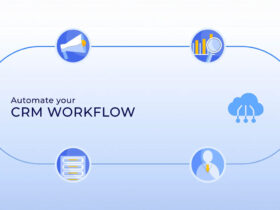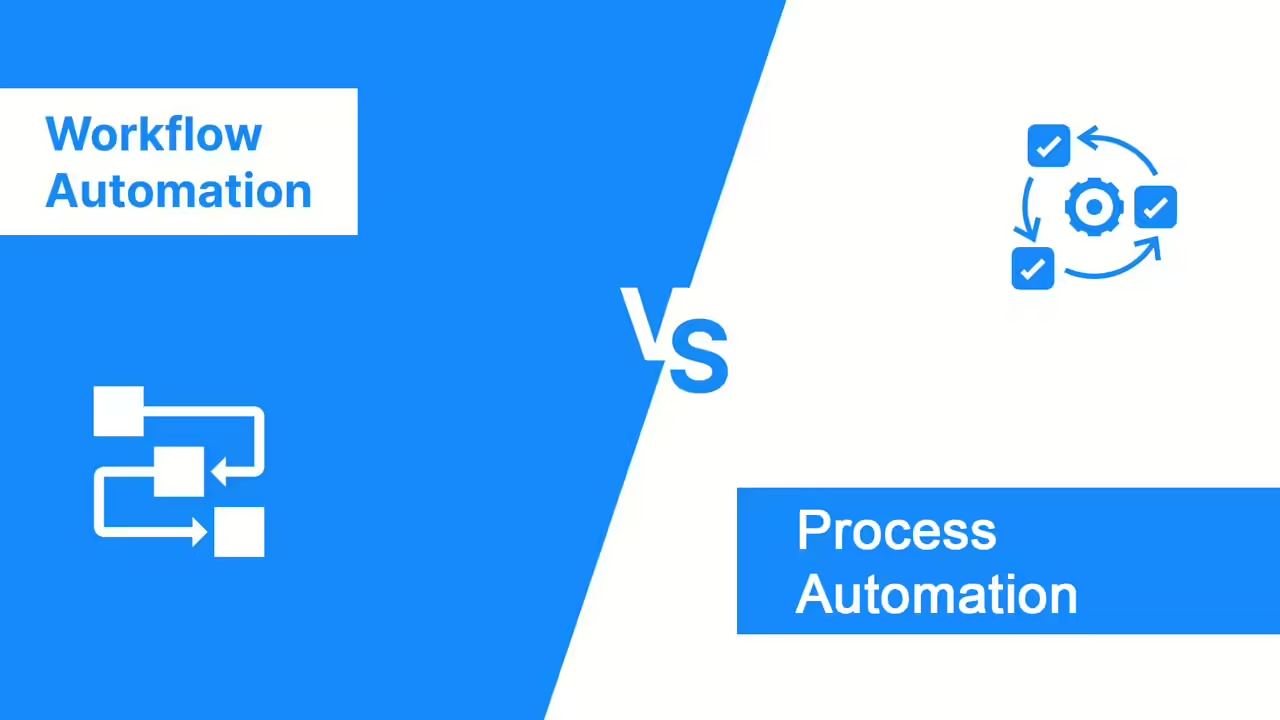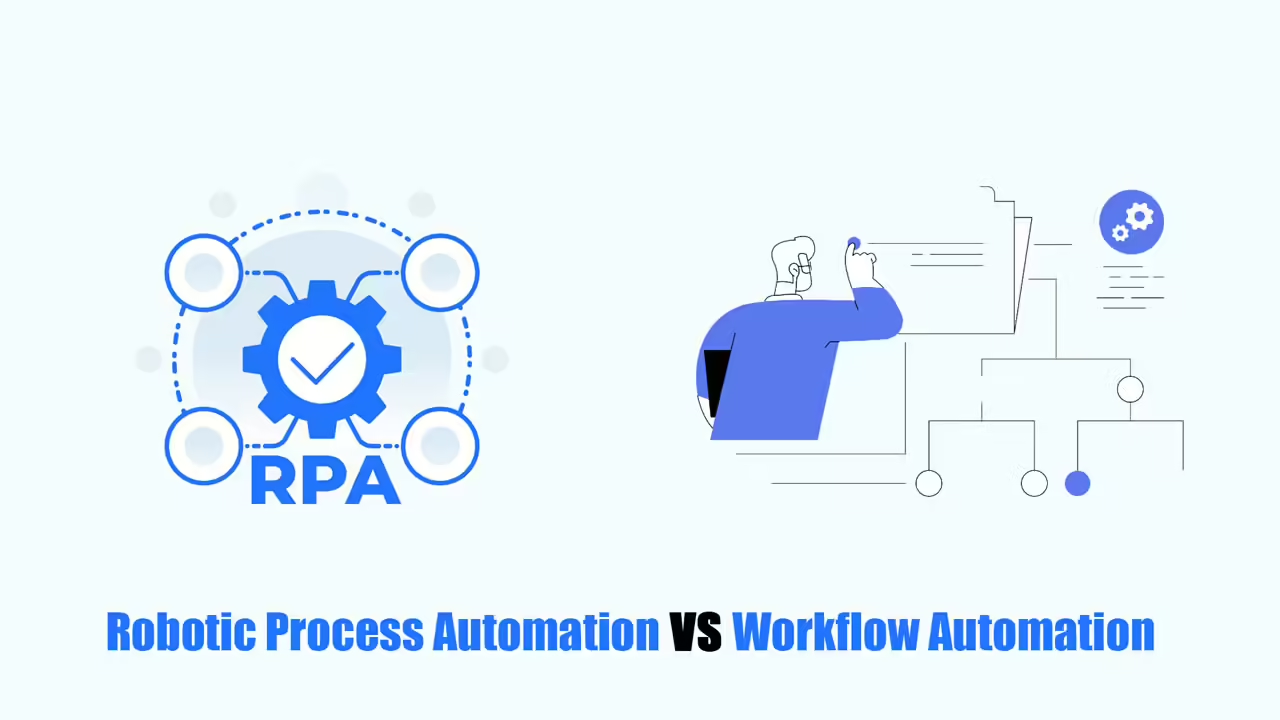Workflow automation in e-commerce is a great way to keep your business running smoothly in today’s fast-paced world. Because websites are always up and running, orders can be placed at any time.
But of course, your employees can’t work 24/7. This doesn’t mean your business has to stop working at night!
Keep reading to learn more about e-commerce workflow automation, including what it is, why you should use it, and how it can benefit your business.
What is Workflow Automation in E-Commerce?

Workflow automation is about making business tasks easier and faster. It’s like having a computer do the work that people usually do.
The idea is to find tasks that are done over and over again, or any manual task that a computer could do better. Instead of using up valuable staff time, you get the same work done automatically.
This is really helpful for e-commerce, as it can make many different tasks easier, from hiring people to planning marketing. There are special online tools that can help businesses automate their work, even if they don’t know how to code.
Top 7 Ideas of Workflow Automation in E-Commerce
Here are some ideas on how to automate tasks in your online store to help it run smoother:
Vendor Management
Important things like contract details, contact forms, and documents that need signing can be uploaded to online databases to share with new suppliers when needed. This is usually done through emails and spreadsheets.
This process can be slow and sometimes messy, but it can be made smoother and passed from one team to another. This way, the finance team, other teams, and managers can review the information, make changes if needed, and approve it.
Inventory Management
It’s really important to connect your online store with your inventory system.
You can automate inventory management by sorting items into groups, looking at supplier ratings, value, and other things. Decisions and approvals are made much faster. This also helps you buy things more efficiently and accurately. E-commerce workflow automation makes it easy to keep track of orders too.
A two-way connection is needed so that every time something is sold, a sales order is made in your inventory system, and the number of items in stock is updated.
Solving Grievances/Complaints
People often share feedback on forums and social media. If you don’t address this feedback, it can hurt your business over time. Bad reviews can be avoided by staying on top of things.
Using automation to handle orders is important for being responsive to customers. It makes sure their returns, complaints, or reviews are answered quickly and fully, which helps improve your brand’s reputation.
Adding Lists
When new products or services are added to websites, they need descriptions and pictures. Often, many people need to approve them before they can be shown online.
Doing this manually would need a lot of people, but it can be done automatically with a workflow tool. This makes the process faster and more efficient.
Accounting
Every sale and purchase is tracked. Accounting needs to be done at the same time. This can take time and cause mistakes if done by hand, but an e-commerce workflow system can do it automatically and correctly.
Refunds & RMA
RMA stands for Return Merchandise Authorization. It’s a way to get a refund, replacement, or repair when you return a product that’s still under warranty.
Refunds and RMA claims are different from regular complaints because they need to be processed and handled quickly. If these requests aren’t answered promptly, it makes the company look bad.
Dealing with this manually wastes time and effort. Ignoring it can hurt the company’s reputation. A special software for online stores can automate this process to avoid mistakes and delays.
Order Fulfillment
Order fulfillment is really important because it directly affects how people see your company. If your business doesn’t have enough items in stock, the first thing to do is see if you can get the order from another warehouse.
If that’s not possible, you can ask your supplier to fulfill the order. If neither of those options work, you can put the order on hold and let the customer know it will take longer than usual to arrive.
Workflow Automation in E-Commerce Process Flow
Knowing how your online store works step-by-step is really important to stay ahead. It helps you find the main tasks you can automate to make things faster and easier, and sell more.
Receiving
When you get an order, you need to take the customer’s details from your business software and put them into your system. If people do this by hand, they might make mistakes.
Automating this process means a computer does it for you. The orders are put into the system automatically, and the customers get a notification right away.
Processing
This also includes handling orders in the warehouse, where workers check if items are in stock and where they are located.
By automating this, workers spend less time checking things and a list is automatically created.
Shipping
After an order is ready in the warehouse, it needs to be sent to the delivery company. Workers normally have to gather shipping info like weight, size, location, and price. They also have to print shipping labels and tell the delivery company to pick up the order.
If you automate this process, you don’t need people to do it anymore. All the information is saved in the computer, the shipping labels are printed automatically, and the customer gets a notification when their order is shipped. They can even track their order.
Workflow automation in e-commerce makes your online store work smoother and faster. By using AI, like bots and software, you can do everyday tasks much quicker than people. Plus, you avoid those small mistakes that can turn into big problems later.
When computers do the boring stuff, your employees can focus on more important things that really need their attention. This helps your business reach its full potential.
Read more:












